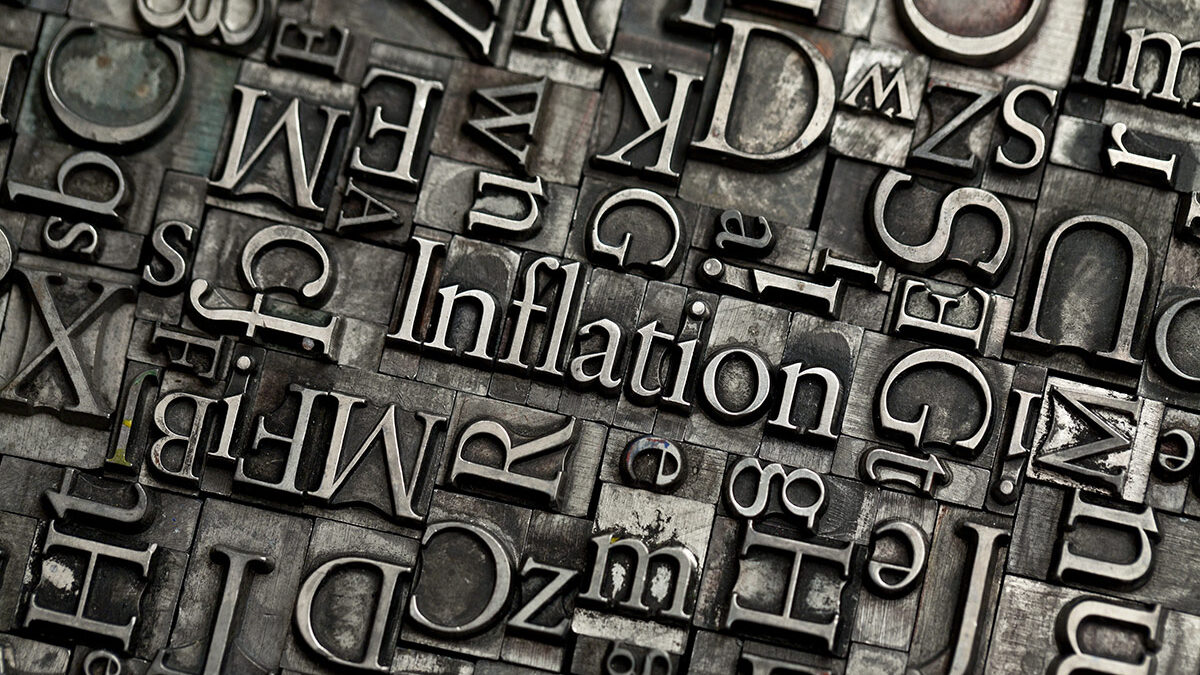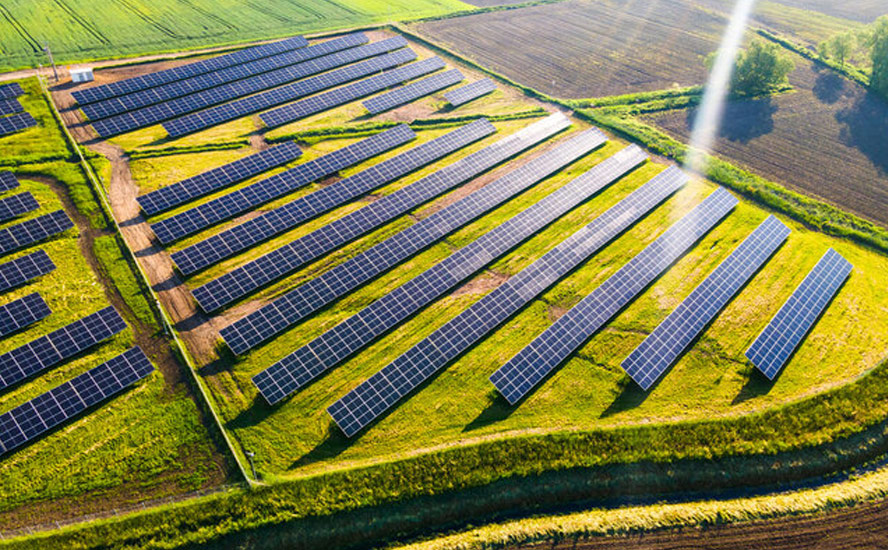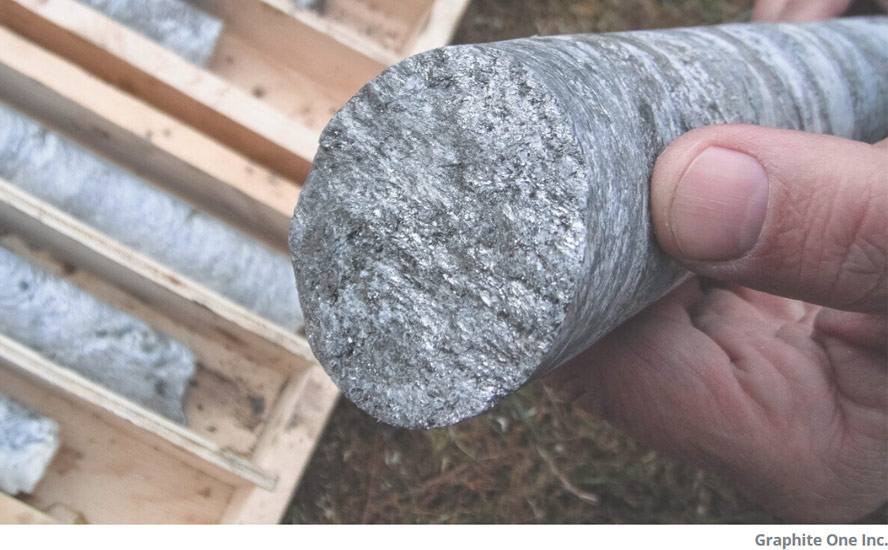Dr. Copper’s inflation diagnosis shows the patient is already sick
2021.05.05
Copper’s broad use in various industrial sectors including construction, transportation and telecommunications, makes it a reliable early indicator of economic activity.
In fact, “Dr. Copper’s” ability to predict which way the global economy will go, has earned it a PhD in economics. When copper prices rise, better manufacturing data often follows. The opposite is also true, with falling copper usually signaling a slowdown is taking place.
Given that copper prices have nearly doubled from a year ago, is Dr. Copper right? Is demand for the industrial metal being driven by greater economic activity, as countries forced into lockdowns by covid-19 begin to recover amid vaccine rollouts and the lifting of social distancing restrictions? How about other metals? Is a booming commodities complex the harbinger of consumer price inflation that could seep into the broader economy and afflict the prices of everyday goods and services?
An AOTH analysis will show that the current environment of monetary stimulus, and fiscal stimulus in the form of trillions in government spending designed to boost borrowing and spending, combined with supply chain disruptions, has created the perfect conditions for inflation. The average person may not see it yet, but it’s coming. The numbers don’t lie.
The data also shows that the US Federal Reserve is downplaying the inflation risk. This is important for investors to recognize as they seek to navigate what’s ahead for their investments and how to protect them.
Commodities surge
Over the past year the entire commodities complex, everything from copper and steel to crude oil, cotton and soybeans, has climbed steadily; the Thomson Reuters/ Core Commodity (CRB) Index is up 70% since last May.

What’s behind this cross-the-board pricing updraft? In a word: demand. As the largest economies rebound from the pandemic amid massive government stimulus spending, manufacturing and construction is picking up, the newly vaccinated are out and about filling their cars with gasoline and booking flights. China is buying record amounts of corn, more than triple last year’s tonnage, as its hog herd recovers from African swine fever. Grains have gotten so expensive they’re upending global trade flows.
Bloomberg notes the fundamentals for commodities, an asset class that is both cyclical and volatile, are so strong right now, prices are showing their steepest backwardation in 14 years.
Commodity futures are often priced higher at longer maturities but urgent demand has flipped about half of the commodities tracked by the Bloomberg Commodity Index including oil, natural gas, copper and soybeans, into backwardation, the news outlet states — noting this is an indication of how tight supplies are currently for these markets.
Among the highlights are steel, meat, corn, soybeans, lumber, iron ore and copper.
The cost of corn fed to livestock has doubled in the past year while soybean meal is more than 40% more expensive – meat is going up in price, a lot more. Steel prices, low for years due to overcapacity, have bounced higher on account of surging demand, and output cuts in China. Lumber prices have quadrupled due to skyrocketing demand for housing, fueled by rock-bottom interest rates, as well as a shortage of processed wood.
Bad weather including drought is the main culprit for the rising prices of several agricultural commodities.
Arabica coffee future have spiked by about a third in the past year, raw sugar prices are climbing, and wheat prices are their highest since 2013.
The rally in crop prices is reportedly stirring food inflation fears because staples like wheat and corn influence the prices of everything from bread and pizza dough to meat and pop.
(There is typically a time lag before raw food commodity prices increases show up in grocery stores. Expect retailers to absorb the costs for now, but they will pass it on to consumers when margins become too thin.)
Meanwhile countries looking to rebuild infrastructure, like the United States with Joe Biden’s $2.3 trillion American Jobs Plan, are lighting a fuse under metal commodities and inspiring talk of a new commodities cycle driven primarily by the so-called green economy.
According to CRU Group, a commodities consultancy quoted by Bloomberg, President Biden’s big infrastructure spend, which still has to be passed by Congress, would add 5 million tons of steel to the 80Mt the US uses every year, with similar boosts to aluminum and copper demand.
Not only is copper essential to construction, transportation and telecommunications, it also has a critical role to play in the shift to climate-friendly solutions. These include batteries, EVs, solar panels, wind turbines, connecting renewable energy to the grid, and building out 5G networks.
The main factors driving copper prices higher are increased Chinese orders amid a strong manufacturing sector; expectations of a return to growth following a disastrous 2020; trillions in promised green and blacktop infrastructure spending particularly in the US, Europe, and China; and supply disruptions resulting from virus-related mine closures.
Recovering spectacularly from 2020’s covid-associated hit to demand, spot copper recently hit a 10-year high of US$10,000 per tonne ($4.53lb) and is currently within a nickel of its all-time 2011 peak of 4.56/lb.

BloombergNEF says nearly 2 million tons of copper — about 10% of global mined output — was used to build electricity networks in 2020; and expects applications requiring copper to nearly double by 2050, led by penetration of low-carbon technologies like solar power and electric vehicles.
Anyone thinking that commodities’ sector-wide growth spurt is temporary, is sadly mistaken.
Forecasters including the big banks expect the rally to keep going, as the global recovery quickens pace.
JP Morgan & Chase said the “reflation and reopening trade will continue,” while UBS expects the whole commodities complex to rise 10% in the next year.
One indication of how well metals are doing right now, concerns resource sector profits.
It was recently reported that oil companies, up to now the top earners in the natural resource space, are being eclipsed by their mining peers, due to higher metals prices. The top five iron ore companies — BHP, Rio Tinto, Vale, Anglo American and Fortescue Metals Group — are apparently on track to deliver $65 billion in combined profits this year, about 13% more than the five largest oil producers.
Not only are the prices of iron ore, copper and other base metals soaring, thereby adding to miners’ profitability, they are also sending an inflationary wave through the global economy, increasing the cost of everything from electrical wires to construction beams, the article states.
Holding that thought, I’d like to correct something I read while researching this extremely interesting topic. Dr. Copper, the passage stated, is telling us that money supply inflation leads to asset price inflation, commodity price inflation, and then ultimately, consumer price inflation.
In fact this is not necessarily the case. During the 2008 financial crisis central banks used quantitative easing and money-printing, monetary policy, to try and re-boot the economy, resulting in an increase in M2 money supply. However this did not result in inflation. Why?
The answer is that in 2008, we did not have the spending component. All the stimulus money stayed within the banks. This time is different. Among the US government’s emergency covid-19 measures are/ were direct “stimmy” aka helicopter money payments, of $600, $1,200 and $1,400 (at separate times).
Central bankers have realized that keeping interest rates low and maintaining monthly asset purchases (ie. quantitative easing), have not given the desired economic boost; now they are counting on fiscal policy, ie., government spending, to do the trick.
The US government has so far spent $4.5 trillion on pandemic-related relief, boosting the national debt to $28 trillion in under a year. In October 2020, the debt zoomed past 100% of GDP, for the first time since WW II, but that was just the beginning. Based on monetary programs the Fed is already executing, the money supply will increase by at least another $2.3 trillion this year.
Thus, we have monetary easing happening at the same time as fiscal spending “carte blanche” (remember Biden believes strongly in the power of the state to tax and spend. A long wish list waits to be filled, with little to no concern regarding the already out of control $28 trillion national debt, courtesy of Modern Monetary Theory, or MMT)
The result of these two forces acting together, is bound to create inflation; in fact it’s already happening, and we can prove it.
US economy sizzling
In the US, first-quarter GDP grew at an annualized 6.4%, the second-highest quarterly figure since 2003.
The US inflation rate has already doubled within a matter of months and is likely heading to 3% by June. Reuters reports labor costs in the United States jumped 0.9% in the first quarter, providing further evidence US inflation will go higher.

The massive fiscal stimulus, which includes the trillions already spent on covid-19 relief and more to come with President Biden’s proposed $2.3 trillion infrastructure bill, and $1.8B plans for education and health care, dwarfs anything even considered in the 1970s — when the United States suffered the last major bout of inflation.
Moreover, there is a palpable excitement that Americans will finally be able to discard the shackles of covid and spend the money they saved last year and the wages they’re starting to earn again. So demand is likely to soar.
One surprising result of covid, and a telling illustration of the inflationary impacts of US stimulus, is how many US citizens are finding their bank accounts flush with cash after being forced to stay at home with not that much, other than buying stuff on Amazon and dining in, to spend their money on.
Thanks to three rounds of stimulus, personal income has hit a new record high. According to the BEA’s (Bureau of Economic Analysis) March 2021 report, via MishTalk, disposable personal income increased 23.6% to $4.18T; and personal consumption expenditures grew $616 billion, or 4.2%.
The latter is especially important. It shows not only that Americans are saving money; they’re also spending it. Considering that consumer spending usually accounts for about two-thirds of the economy (in Q1 it represented 69.7% of GDP), even a small percentage increase can result in billions worth of spending that can have a dramatic effect on aggregate output/ GDP.
Wolf Richter of Wolf Street gets even more granular with this data. He observes that personal income from all sources including government stimmies, was 31% higher in March compared to March 2019, hitting a seasonally adjusted $24.2 trillion. Below are a few more goodies. Remember all of this feeds into the inflation rate, which we believe, is a lot higher than 2.6%, and will be reflected in the official statistics in due course.

- Income from wages and salaries in March rose 1.1% from February, to a seasonally adjusted annual rate of $9.8 trillion. More workers in the hospitality industry, including restaurants and hotels, were hired back. And some pay increases including higher minimum wages at state and local levels flowed into the data.
- Spending on durable goods spiked by 10.8% in March from February, to a seasonally adjusted annual rate of $2.0 trillion, up 33% from March 2019.
- Spending on nondurable goods – mostly food and gasoline – jumped by 6.5% in March from February, to $3.4 trillion (seasonally adjusted annual rate), up 15% from March 2019.
- Spending on services, which had gone nowhere for six months, rose 2.2% in March from February, to $10.0 trillion (seasonally adjusted annual rate), but was still down 2.9% from the peak in February 2020.
- Total consumer spending – nurtured so beautifully by this free money from the sky – jumped 4.2% in March from February, and by 7.2% from March 2019, to a seasonally adjusted annual rate of $15.4 trillion.

These are obviously big numbers. But they mean little unless we can show that they are actually resulting in inflation, and that higher prices are being passed on and down the supply chain. Fortunately, we can.
Again sourcing Wolf Street, Richter goes the extra mile of reprinting an email from the president of a company that manufactures metal shingles for the US market.
“Our industry is dealing with supply chain shortages as well as rapidly increasing prices. While we have not had to go to this extreme yet on the types of specialized products we produce, I have seen the selling prices of “commodity-based” metal roofs increase by 30%over the last six months, with additional increases projected,” President Todd Miller writes.
“As a metal roofing manufacturer, here are some of the raw material increases we have experienced over the past six months”:
- Unpainted aluminum: up 15%
- Unpainted galvanized steel: up 57%
- Coatings used on our products: up 10%
- Corrugated packaging: up 15% on average
- Lumber for packaging: up 34%
- Fasteners: up 5 to 8%.
“And then we’re also dealing with escalating freight costs…”
“I suspect that some of the raw material prices will soften hopefully in late 2021 and early 2022. But increases in costs for labor and transportation will make it challenging for most manufacturers in our sector to drop prices — we will all be working to regain margin from the raw material increases.”
That last bit is important, because it indicates manufacturers are unlikely to lower their selling prices even if their input costs drop, unless they are able to regain the margin they lost when input costs suddenly surged.
Richter cites the CEOs of Chipotle, Whirlpool and Kimberly-Clark, stating they all plan on raising their prices due to raw materials inflation. Moreover, according to BoA Global Research, the number of mentions of “inflation” during earnings calls, have more than tripled, year over year so far, to “the biggest jump in our history since 2004.”
Richter concludes:
The inflationary mindset has set in. Input price increases are squeezing profit margins, and big companies are raising their prices and point at massive inflation overshoot. Smaller companies are too, with boots-on-the-ground view of surging costs…
Eventually all this inflation shows up in the US trade balance. In the first quarter, the balance of exports minus imports (the trade deficit) grew by 4.1% to an all-time worst $1.18 trillion. (during the financial crisis the deficit was only about negative $450 billion)
In simple terms, this means far more goods and services were imported than exported (despite billions worth of 25% tariffs still on Chinese imports), thereby causing “a massive drag on GDP.” As Wolf Street reminds us, exports add to GDP, but imports reduce it.

Fed nonsense
Despite the mounting evidence of inflation throughout the economy, the US Federal Reserve, whose dual mandate is to keep inflation in the “Goldilocks zone” of around 2% and to control unemployment, has been downplaying inflation, telling the public that even if prices rise, it will only be temporary, or transitory inflation.
The Fed has also said even if inflation goes beyond 2%, it won’t raise interest rates to cool the economy until it is satisfied that doing so won’t damage the recovery.
Yet some believe the Fed is distorting the official figure even before it becomes a problem. Last week the BEA reported that the 12-month change ending March 31, 2021, in the core personal consumption index (the Fed’s preferred price index), was 1.83%. That is within a tenth of a percentage point of the inflation index figure in 2020 and 2019. In his blog ‘The Carson Report’, Joe Carson questions how last year’s inflation rate could be similar to previous years given that the economy was essentially closed for three months and GDP plummeted 31%.
“[I]nvestors need to ignore the Fed’s rhetoric and treat upcoming price increases as “new” inflation, Carson writes.
He also takes issue with what the Fed plans to do about it, specifically, Jerome Powell’s argument that inflation will ease once manufacturers increase output and eliminate supply bottlenecks, and that housing inflation will subside after builders construct more homes:
It’s hard to see how more supply (or growth) will slow inflation anytime soon. Federal Home Loan Mortgage Company (Freddie Mac) estimates that the US needs almost 4 million new homes to meet demand. That could take two to three years. Also, it’s hard to see how increasing product output will solve the inflation problem. The supply-side argument solution; fight inflation with more demand and more commodity inflation.
The Fed’s mantra has always been “inflation is everywhere and always a monetary phenomenon.” But nowhere in Mr. Powell’s statements or comments do you find any monetary policy role for increased inflation or any responsibility for containment. Investors forewarned.
Still unconvinced inflation is becoming a problem? Just ask Warren Buffett. The Oracle of Omaha recently said, as Zero Hedge reports, that a tidal wave of inflation has been unleashed upon the US and it’s only getting worse.
Speaking to Berkshire’s millions of shareholders on Saturday, Buffett said that he was surprised by the “red hot” US economic rebound and warned the company was being hit by inflationary pressures.
“We’re seeing very substantial inflation,” the 90-year-old billionaire who apparently does not have a Fed charge card, said in his nearly 6 hour long address to investors. But it’s what he said that was especially ominous: “It’s very interesting. We’re raising prices. People are raising prices to us and it’s being accepted.”
Why does this matter? Because the ability to pass on price increases and have them stick, means the surge in prices will not be transitory, no matter how many times the Biden admin, the Fed or the Treasury lie and vow the opposite.
Supply chain pressures
Higher commodity prices aren’t only a function of demand; raw material costs are also rising sharply due to supply chain disruptions owing to the pandemic and other factors.
Take copper, for example. Last year a number of temporary mine closures in top copper-producing countries dented supply and buoyed prices. Chile’s copper production fell 4.8% to 430,100 tonnes, Peru’s output tanked 12.5% to 2.15Mt, and S&P Global Market Intelligence says the impacts of covid-19 could weigh on copper production into 2023.
Noting that government-imposed lockdowns canceled about 500,000 tonnes in 2020 the CRU’s director of copper research Vanessa Davidson told the World Copper Conference in Santiago that despite an expected 2.5% increase in copper production this year, the decision by many mining companies to delay key activities including stripping and maintenance to protect workers, could mean the impact of the pandemic will continue to be felt in the coming years.
Recently Chile, the world’s largest copper producer, was hit with another potential supply bottleneck, when the country’s port workers went on strike.
It’s unclear whether the two-day work stoppage impacted copper shipments, but exporters estimated their losses at $1 billion.
Supply chain issues are also denting industrial production, even as manufacturing indices point higher. In the US, HIS Markit’s April Manufacturing PMI hit 60.5, well above March’s 59.1 (any number above 50 indicates an expansion). ISM Manufacturing was at its highest since 1983 in March but plunged from 64.7 to 60.7 in April.

Zero Hedge says vendor performance among goods producers is being affected by delays, with lead times lengthening to the greatest extent on record. Alongside raw material shortages and pressure on supplier capacity, firms linked delays to ongoing disruption to transportation, including port congestion.
Indeed the fiscal stimulus provided by the US government, including $1,400 cheques in direct aid (helicopter money), has meant a one-way flow of goods, ie., imports from Asia, mainly China.
On April 14 S&P Global Platts reported that the Port of Los Angeles — among the most active container ports in the world — had the busiest first quarter on record, handling upwards of 2.6 million TEUs (20-foot-equivalent units). In March alone, the 957,599 TEUs that passed over the docks was double the amount of cargo moved in the same month last year.
Zero Hedge quotes Chris Williamson, chief economist at HIS Markit, saying that “US manufacturers reported the biggest boom in at least 14 years during April. Demand surged at a pace not seen for 11 years amid growing recovery hopes and fresh stimulus measures.”
However, Williamson notes that “supply chain delays worsened, running at the highest yet recorded by the survey, choking production at many companies. Worst affected were consumer-facing firms, where a lack of inputs has caused production to fall below order book growth to a record extent in over the past two months as household spending leapt higher.”
Which is pushing prices dramatically higher…
“Suppliers have been able to command higher prices due to the strength of demand for inputs, pushing material costs higher at a rate not seen since 2008.”
A supply chain pressure of a different sort is happening in the Democratic Republic of Congo, source of most of the world’s cobalt, along with copper, diamonds and several critical minerals essential to the new green economy.
This week militants raided villages and killed at least 19 people, including 10 soldiers, prompting DRC President Felix Tshiksekedi to declare a state of siege.
The violence threatens to upend mining in a country widely known to be the wealthiest in the world; its untapped mineral deposits have an estimated worth of $24 trillion. Militants often attack villages as a ruse for stealing metals and selling them on the black market:
The UN believes over 50% of the region’s 200 mines are controlled by armed forces which employ illegal taxation, extortion, forced labor, and violence to ensure the flow of mineral wealth. According to one CNN report eastern Congo’s armed groups generate some $180 million through the illicit trade of tin, coltan, tungsten, and gold which are easily traded across the porous eastern frontier and funneled into the international market…This volatile mixture of extraordinary mineral wealth, ethnic tension, and proxy armies can drag the region into another brutal war…With tensions high and 1994’s genocide still casting its shadow over the region another devastating war remains a looming and distinct possibility.” Nathan William Meyer, ‘Deal of the Century: Will Chinese Investment Save Congo?’
Debt
Struggling to contain the economic fallout from the pandemic, central bankers have realized that keeping interest rates low and maintaining monthly asset purchases (ie. quantitative easing), have not given the desired economic boost; now they are counting on fiscal policy, ie., government spending to do the trick. However, the US government does not have the money and there is no way to raise that much money (Biden’s the $16 trillion man), via taxes so they will borrow most of it, at current rock-bottom interest rates, or simply print more.
A $2.3 trillion US deficit is predicted for 2021, not as high as 2020’s $3.1 trillion but more than double 2019’s $984 billion, and that is before the $1.9 trillion American Rescue Plan that recently passed Congress and has Biden’s signature.
More spending is on the way. A LOT MORE.
Biden’s $2.3 trillion economic recovery package, unveiled in late March, has as its centerpiece the biggest infrastructure spending commitments since Roosevelt’s New Deal. It includes typical “blacktop” improvement projects such as roads, bridges, ports, airports and public transit, as well as billions in funding for electric vehicle development. A third $1.8 trillion spending package directed at education and health care is the latest proposed by Biden.
The US government has already spent $4.5 trillion on pandemic-related relief, helping to boost the national debt to $28 trillion in under a year.
In October 2020, the debt zoomed past 100% of GDP, for the first time since the Second World War, but that was just the beginning.
The Congressional Budget Office (CBO) is projecting that with all of this year’s spending, the national debt in 2021 could balloon to $35 trillion! And that is before adjusting for fiscal stimulus
There is a historically close correlation between gold prices and debt to GDP. The higher the ratio, the better it is for gold.
An article in FEE, the Foundation for Economic Education, notes that, by the end of 2020, US debt to GDP hit 129%. For context, that is nearly a third larger than the entire US economy, and considerably higher than Greece’s 2010 debt to GDP ratio when it received a bailout from the International Monetary Fund.
FEE also argues that, at such unsustainable debt levels, the demand for US Treasuries will eventually dry up, and is likely one reason why cryptocurrencies are currently doing so well:
In seemingly the blink of an eye, cryptos have gone from being discussed in the corners of Reddit rooms and university lounges to a market of more than $2 trillion. It’s no exaggeration to say cryptos are now mainstream; they are being gobbled up by hedge funds and star athletes signing 10-figure contracts.
And it’s not hard to see why. The market is hedging. Like rats on a sinking ship, many are eyeing an exit, sensing that the dollar’s day may finally be coming to an end as its value is eroded by mass pumping.
Golden hedge
Another Zero Hedge article titled ‘Gold is Laughing at Powell’ states that, so long as the Fed decides to print trillions more fiat dollars and artificially cap yields and interest rates, the Fed can indeed “service” it’s nearly $30T in public debt for the “foreseeable future,” as the cost of that debt is forced to the basement of history.
But what Powell forgets to say, quite cleverly, is that the “foreseeable future” of which he is telegraphing is nothing more than a future of equally foreseeable and grotesquely expanded, and hence, debased U.S. dollars, which is needed to monetize that truly unsustainable debt.
Needless to say, such money printing is great news for gold…
Gold is a hedge against inflation, so it is generally bought when inflation goes up, or looks like it will, to guard against currency devaluation.
We know from a previous article that the purchasing power of most Americans earning wages or collecting a salary, has stagnated over the past four decades. This is all down to inflation and the inability of fiat currencies to protect against it.
US wages have failed to keep up with the rate of inflation. The wage and salary earner are literally getting screwed every day because the value of the dollar is being devalued by a fractionally small amount. Over time, however, the diminished value is huge.
The dollar has lost 90% of its purchasing power since 1950.
By contrast, since 1972 gold has gone from $35/oz to $1,750.
Inflation erodes the purchasing power of fiat currencies and eventually they become worthless.
Most people make a cause and effect error, when talking about inflation and rising prices. In an article slamming Modern Monetary Theory (MMT), the Mises Institute states,
Culbreath, like most “mainstream” economists, misidentifies inflation as a “rise in the price levels.” But rising price levels are an effect, not a cause, of inflation. Inflation is the very act of money creation by a central bank.
Contrary to proponents of MMT, inflation’s pernicious effects are not limited to times of “full employment.” Instead, they are felt any time the central bank artificially lowers interest rates.
All indications point to another gold run amid rising geopolitical tensions, tighter supply, central bank gold buying, low interest rates, negative real yields, and what could be the most inflationary period in decades.
Although gold hasn’t yet reacted to rising inflation, we expect it eventually will.
Richard (Rick) Mills
aheadoftheherd.com
subscribe to my free newsletter
Legal Notice / Disclaimer
Ahead of the Herd newsletter, aheadoftheherd.com, hereafter known as AOTH.
Please read the entire Disclaimer carefully before you use this website or read the newsletter. If you do not agree to all the AOTH/Richard Mills Disclaimer, do not access/read this website/newsletter/article, or any of its pages. By reading/using this AOTH/Richard Mills website/newsletter/article, and whether you actually read this Disclaimer, you are deemed to have accepted it.
Any AOTH/Richard Mills document is not, and should not be, construed as an offer to sell or the solicitation of an offer to purchase or subscribe for any investment.
AOTH/Richard Mills has based this document on information obtained from sources he believes to be reliable, but which has not been independently verified.
AOTH/Richard Mills makes no guarantee, representation or warranty and accepts no responsibility or liability as to its accuracy or completeness.
Expressions of opinion are those of AOTH/Richard Mills only and are subject to change without notice.
AOTH/Richard Mills assumes no warranty, liability or guarantee for the current relevance, correctness or completeness of any information provided within this Report and will not be held liable for the consequence of reliance upon any opinion or statement contained herein or any omission.
Furthermore, AOTH/Richard Mills assumes no liability for any direct or indirect loss or damage for lost profit, which you may incur as a result of the use and existence of the information provided within this AOTH/Richard Mills Report.
You agree that by reading AOTH/Richard Mills articles, you are acting at your OWN RISK. In no event should AOTH/Richard Mills liable for any direct or indirect trading losses caused by any information contained in AOTH/Richard Mills articles. Information in AOTH/Richard Mills articles is not an offer to sell or a solicitation of an offer to buy any security. AOTH/Richard Mills is not suggesting the transacting of any financial instruments.
Our publications are not a recommendation to buy or sell a security – no information posted on this site is to be considered investment advice or a recommendation to do anything involving finance or money aside from performing your own due diligence and consulting with your personal registered broker/financial advisor.
AOTH/Richard Mills recommends that before investing in any securities, you consult with a professional financial planner or advisor, and that you should conduct a complete and independent investigation before investing in any security after prudent consideration of all pertinent risks. Ahead of the Herd is not a registered broker, dealer, analyst, or advisor. We hold no investment licenses and may not sell, offer to sell, or offer to buy any security.
Legal Notice / Disclaimer
Ahead of the Herd newsletter, aheadoftheherd.com, hereafter known as AOTH.Please read the entire Disclaimer carefully before you use this website or read the newsletter. If you do not agree to all the AOTH/Richard Mills Disclaimer, do not access/read this website/newsletter/article, or any of its pages. By reading/using this AOTH/Richard Mills website/newsletter/article, and whether you actually read this Disclaimer, you are deemed to have accepted it.




























